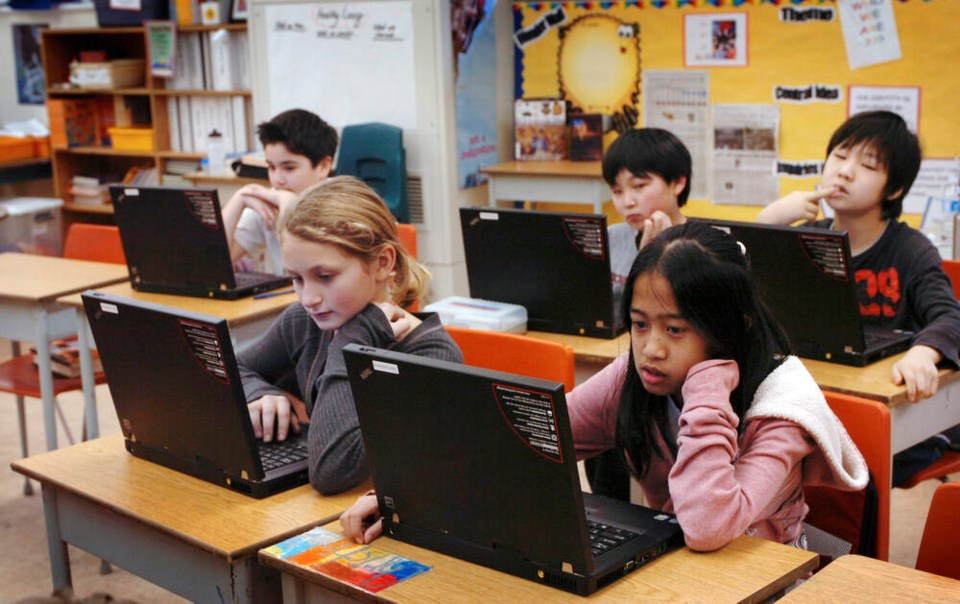In its ham-fisted rush to issue its 2022 “ranking” of B.C.’s elementary schools using only the results of the Education Ministry’s controversial Foundations Skills Assessment, the Fraser Institute — a conservative public policy “think tank” — may have backed itself into an uncomfortable corner in this time of Orange Shirt Days and truth and reconciliation initiatives.
How so? Read on.
A 2021 ministry report on the performance of Aboriginal students in the public school system, entitled “How Are We Doing?,” counted 1,405 of B.C.’s K-7 schools as having 72,149 Indigenous students.
The Foundations Skills Assessment is administered to all Grade 4 and Grade 7 students, both Indigenous and non-Indigenous.
Turns out that the four “lowest performing” elementary schools on the FSA, according to the Fraser Institute’s one-shot ranking system, have significant populations of First Nations students.
Two of the schools are in the Quesnel School District, which serves about 2,950 students with 12 elementary schools.
Approximately one-third of the student population is of Indigenous ancestry from the First Nations of Nazko, Lhtako, ?Esdilagh, and Lhoosk’uz. Students who are Métis and Inuit also attend Quesnel district schools.
Another school not performing well on the FSA is in the Nisga’a School District, which is situated in the Nass Valley, where students are primarily of Nisga’a descent.
The district is unique in that it’s small (about 370 students) and students are members of one language and cultural group — the Nisga’a Nation.
Yet another “low performing” elementary school is Alexander Elementary in Duncan. According to its own website Alexander Elementary houses about 250 students, the majority of whom are from the Cowichan First Nation.
The school’s website notes that all students receive language instruction in Hul’q’umi’num and the school has a “strong Aboriginal support team.”
All of which raises two important questions in 2023: Firstly, why is the FSA administered right across the Grade 4 and Grade 7 school population, regardless of the application of any other filter? And secondly, what is the Fraser Institute’s FSA-based low ranking of these schools and others with similar significant Indigenous populations intended to demonstrate?
Possibly, regardless of the Fraser Institute’s intention, the “ranking” actually substantiates what the Canadian Council on Learning said in 2007: “Assessing a child in a way that does not seem meaningful or relevant to their life and culture is inauthentic and therefore meaningless, because it does not respect the learning of the whole child.”
In a paper by Jane P. Preston and Tim R.Claypool that analyzed assessment practices for Indigenous students, the authors say that most assessment takes place through a Western worldview.
The authors, from the University of Prince Edward Island and the University of Saskatchewan respectively, said many linguistic assessment practices disadvantage Indigenous students, and language-specific and culture-laden standardized tests are often discriminatory, adding that within the past 20 years, assessment tactics for Indigenous students have remained, more or less, the same.
The same paper goes on to raise a question that is under-researched: What methods and approaches to assessment are most compatible with and supportive of educational success for Indigenous students?
Effective October 2021, the FSA was updated by renaming reading to literacy and eliminating the one writing question. The FSA now consists of two components: literacy and numeracy.
According to a B.C. government media release, “the redesign of curriculum maintains a focus on sound foundations of literacy and numeracy while supporting the development of citizens who are capable thinkers and communicators, and who are personally and socially competent in all areas of their lives” — which to my mind ignores all the research about Indigenous ways of learning and is dangerously close to being as colonial as you can get.
A central problem with the lack of validity of the FSA, as far as Indigenous students are concerned, is that the tests often contain items expressed in a way not obvious to an Indigenous student who might have a worldview and experiences that differ from the dominant Western culture.
Beyond all that, the whole idea of “ranking” elementary schools based solely on a questionable single-use assessment is odious to anybody who knows what the factors are that define a good-quality elementary school.
Such factors begin with teacher-student interactions — characterized by teachers’ sensitivity to individual needs, support for positive behaviour, and stimulation of language and cognitive development — as a key indicator of classroom quality that appears to benefit all children, from pre-kindergarten through the grades, all of which the Fraser Institute’s “ranking” ignores.
Nonetheless, whatever the Fraser Institute’s intention was in publicising low performance rankings of public schools with a significant population of Indigenous kids, “the data has served an important role in bringing Aboriginal education out of the shadows and shining a light on it,” according to Tyrone McNeil, president of the First Nations Education Steering Committee.
Geoff Johnson is a former superintendent of schools.
>>> To comment on this article, write a letter to the editor: [email protected]



